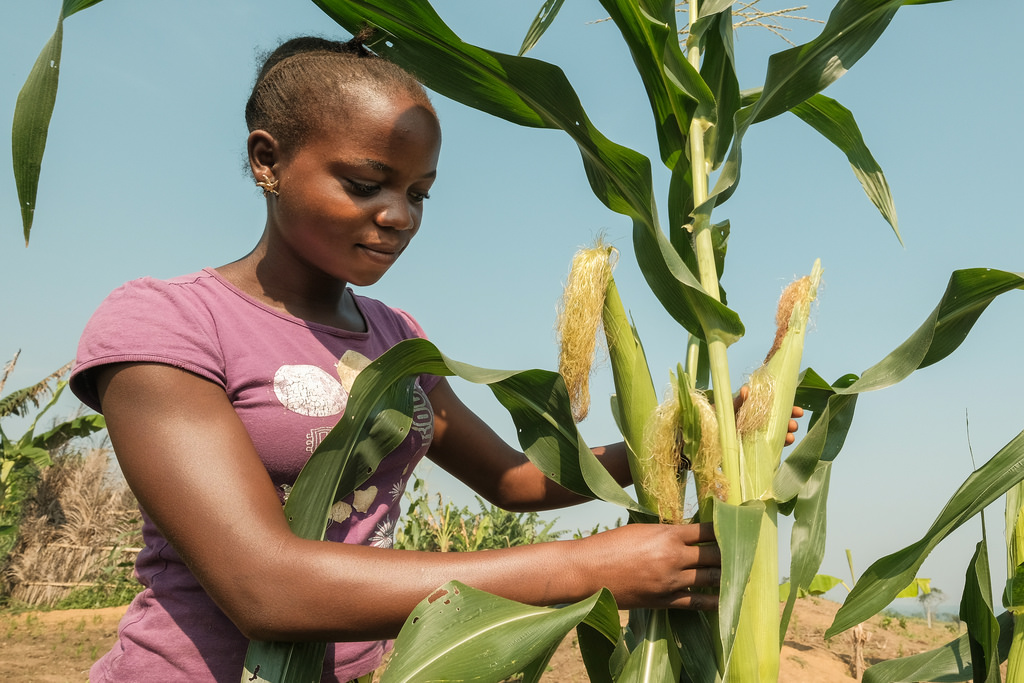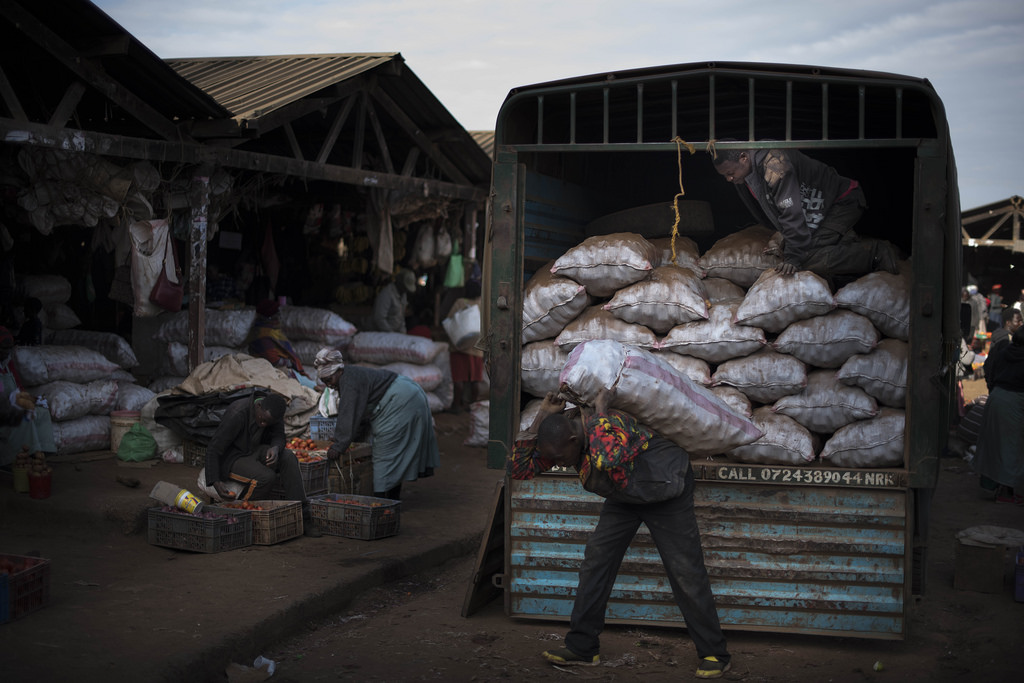

Opinion: Towards Food Security
June 30, 2018
By Bernard Wonder
Former Head of Office, Productivity Commission and Deputy Secretary, Department of Agriculture, Fisheries and Forestry
Since its inception in 1987, The Crawford Fund has worked relentlessly to advance productivity on smallholder farms throughout Africa, Asia and the Pacific. In that time much has been achieved with a list too long to articulate here of research and innovation outcomes that have markedly improved yields either directly through better husbandry, plant physiology and genetics or indirectly via improved land, water and ecosystem management. There is virtually no area of agriculture untouched by better technologies and practices with gains being sometimes specific to particular breeds and varieties and at other times being very general yet powerful as in the case of the green revolution.
Notwithstanding the benefits of research and development and related extension and adoption efforts and their positive contribution to improved food security, poverty alleviation, household welfare and living standards in smallholder communities, many challenges remain. The simple fact is that it takes much more than scientific research to overcome the impediments and constraints facing smallholder communities. Most importantly, smallholder family incomes will be a key determinant of longer term access to goods and services, including food, health and education as well as the capacity to save or borrow towards on- farm improvements aimed at increased levels of output and profitability.

Taking a broader perspective raises the question of what should an action or reform list look like if national and international agencies and institutions are driven to address food insecurity and the host of other health, education and related challenges facing many smallholder communities. The answer lies not only in addressing the wide set of activities that enable smallholders to sustainably grow and produce farm outputs but also giving attention to access to competitive markets where they can sell their produce, purchase inputs and acquire and share information.
A broad agenda along these lines developed regionally could be aggregated upwards to an inventory of what has to be done nationally and internationally to make meaningful progress. What might be expected to emerge? The more local the perspective, the more obvious will be the physical constraints limiting what can be grown, stored, packed, transported and ultimately marketed. It is pretty clear that even if climatic and soil conditions prove ideal for particular outputs, little is likely to happen if there aren’t efficient means of harvesting, grading and maintaining the quality standards demanded from the market place. These realities translate into an infrastructure agenda that is typically beyond the resources accessible by smallholders, leaving challenges for co-operative or other scale focussed and contracting models that might better suit the circumstances at hand. Perhaps there are also opportunities to address these needs through public-private partnerships financed nationally or internationally in conjunction with regional and local interests.
Having regional smallholders sell their produce into available markets requires some knowledge of prevailing and expected prices for specific fruits, vegetables, grains, root crops and animal products as well as their substitutes in production and consumption. Only then, can there be well informed price discovery on both sides of the market. In developed countries such information can be found from both private and public sources but for the time being in many subsistence/semi commercial agricultural settings, more reliance on a public information base may be necessary. The availability of comprehensive price data will assist governments to keep abreast of levels of competitiveness in markets of interest and thereby facilitate any action required to address anti-competitive behaviour harmful to the interests of smallholders and consumers. Certainly, the information technology available today has made effective and timely communications possible at lower cost for the majority of smallholders, including many in more remote locations.

For many years access to finance was the bugbear of many smallholder communities. This remains the case, although the advent of microfinancing assisted by mobile phone technology able to reach into relatively remote communities has made significant inroads to partially address this issue. Also, NGOs have played a valuable role. Nevertheless, much remains to be done with respect to alternative avenues for finance recognising the limited means of smallholders and the distribution of public and private benefits. The enormity of the challenges is clear but so too are the consequences of not addressing the economic and social implications of inaction.
It isn’t just what happens inside national borders to which an agenda addressing smallholder food security must have regard. To a significant extent, free or freer trade in agricultural products could help address problems of food security. Barriers, restrictions and impediments to trade all work towards food insecurity by raising domestic prices of products behind a tariff wall or having a tariff equivalent effect through the imposition of quotas. Some fortuitous domestic farmers may benefit from higher prices received if they happen to produce what is excluded from trade. Particularly worrying are the impacts on producers for whom a trade restriction on a critical input means higher input costs and a compromised competitive position. Worse still is particular food items not being available at all, thereby denying smallholders and consumers more broadly of the opportunity to maintain suitable diets.
So what then does all this mean for science based, food security related research? The main conclusion is that any program addressing food security, smallholder agricultural development and related poverty and welfare levels needs to have a broad scope. Notwithstanding the importance of plant, animal and landscape based scientific research and development, in many instances only limited progress will be possible without attention to some of the other issues raised here. Infrastructure, market information, institutions promoting adequate legal and competition frameworks, access to finance and regimes providing for free(r) trade are just some of the elements that come to mind. Ensuring that these issues are considered in the future alongside a science-based agricultural agenda is a message The Crawford Fund could further consider and promulgate. This might in turn help to promote a ‘whole of government’ approach to remedying the horrors of hunger, ill health and poverty.
Bernard Wonder PSM
 Since retiring in 2010 from the APS, Bernie has been an independent consultant. During that time Bernie’s assignments have included Associate Commissioner at the Productivity Commission, a Landcare and food security related project focussed on East Africa, a review of wool selling systems and an evaluation of anti-dumping administrative arrangements. Bernie has also assisted several departments with their governance and program management arrangements. Prior to his retirement Bernie was Head of Office at the Productivity Commission, Deputy Secretary at the Department of Agriculture, Fisheries and Forestry, Executive Director of the Australian Bureau of Agricultural and Resource Economics and a Commissioner on the Murray Darling Basin Commission. Bernie has served as a member of private and government sector Boards and has an Economics degree from the University of NSW as well as a Master’s degree from the ANU. In 2004, Bernie was awarded the Public Service Medal.
Since retiring in 2010 from the APS, Bernie has been an independent consultant. During that time Bernie’s assignments have included Associate Commissioner at the Productivity Commission, a Landcare and food security related project focussed on East Africa, a review of wool selling systems and an evaluation of anti-dumping administrative arrangements. Bernie has also assisted several departments with their governance and program management arrangements. Prior to his retirement Bernie was Head of Office at the Productivity Commission, Deputy Secretary at the Department of Agriculture, Fisheries and Forestry, Executive Director of the Australian Bureau of Agricultural and Resource Economics and a Commissioner on the Murray Darling Basin Commission. Bernie has served as a member of private and government sector Boards and has an Economics degree from the University of NSW as well as a Master’s degree from the ANU. In 2004, Bernie was awarded the Public Service Medal.




 0
0